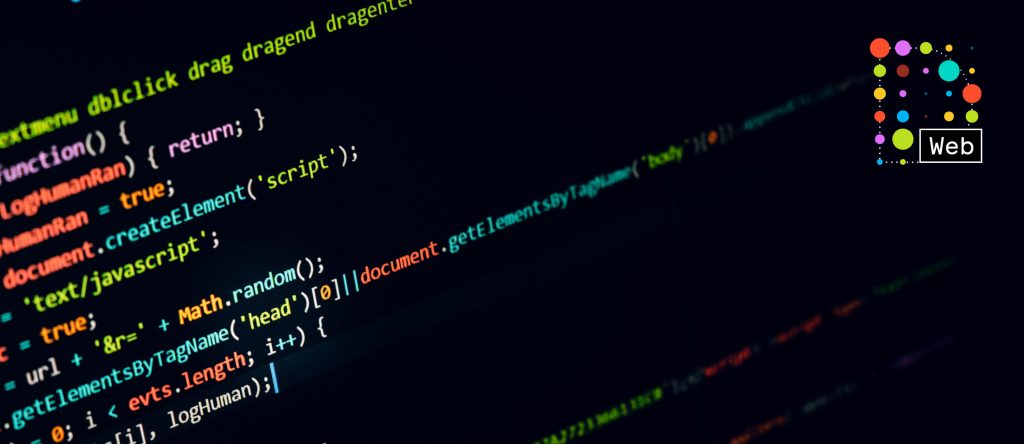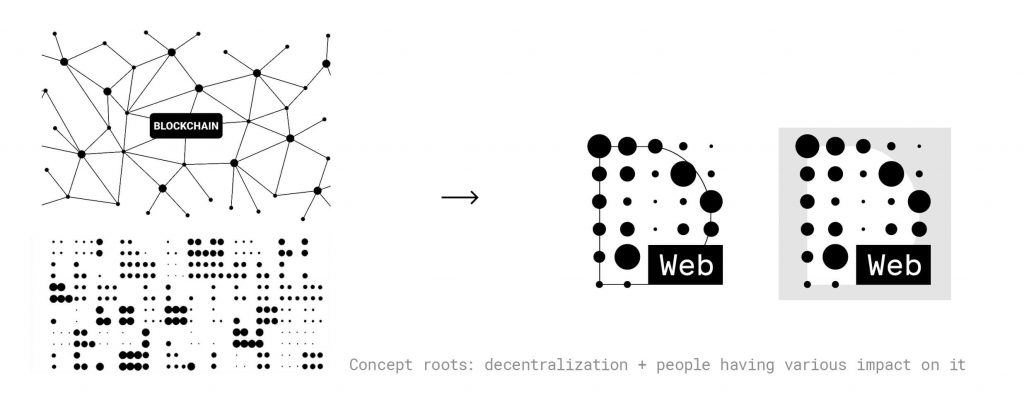
The Decentralized Web is a concept. It’s a set of technologies. It’s a network of builders and designers and dreamers. What started with small gatherings in San Francisco, London, Los Angeles, Toronto and Berlin is growing into a global movement. So how do we visually convey the identity of this idea we call the “DWeb”?

That’s the assignment that Berlin-based designer, Iryna Nezhynska, volunteered to take on. Born in Ukraine, she developed her skills in brand agencies based in Warsaw, designing for some of the world’s largest brands: Lindt Chocolates, Mercedes/Daimler, John Deere. But Nezhynska’s joy came from working with startups, helping small teams express their collective vision. Today, she is the digital designer for Jolocom, the Berlin-based team building tools for self-sovereign identity. “Visual design is in my bones,” Nezhynska told me. “Branding is the air I breathe.”
“If you are a visual communication designer—you aren’t a graphic designer or an artist,” Nezhynska explained. “You are a translator of the emotions/ideas/values that a group wants to communicate. You translate it into a visual language.” So the first step is understanding the “personality” of the brand. How it should feel and speak. Nezhynska began by launching a survey for community members in Berlin, Toronto and San Francisco. Collectively, we imagined the DWeb’s to be “friendly,” “open-minded” and “playful.” But it is also a dynamic change-agent, prioritizing people over technology.

When it came to designing the logo, Nezhynska first had to consider the ubiquitous image of connected nodes that have come to represent the blockchain. “That graphic is so overused,” she ruminated. “I tried to find out who actually came up with it and why it became the blockchain symbol. The blockchain graphic is random, but it has movement. I wanted to build on the common associations of the blockchain, but push the idea further. So I thought, what if we take the graphic and delete the sharp edges, transforming the lines into the D shape? Could we make the cluster of dots ‘live’ within the D? I want people to play with the brand. You can use the D or just suggest it.”


The logo’s central shape is a simple dot. “The concept is that we have different size dots. There are many people building Web 3.0, but they have different influence. They are living and moving. Small dots can become bigger over time. Yet it’s one community,” Nezhynska explained. In her flexible design concept, the dot can be a balloon, a fingerprint, a face. A speck of light. She sought to create pattern and consistency, yet enough free space to allow people to play.
“A logo should be breathing and have a heartbeat. Every dot changes size. Every dot beats differently. A beautiful cacophony.” –Iryna Nezhynska, designer

Next, given the values of the Decentralized Web around open source code and free iteration, Nezhynska looked for an open source font and landed on Lab Mono, a typeface created by a Berlin-based coder and designer, Martin Wecke.
Yet designing the logo was only the beginning of the brand assignment. With the DWeb personality firmly in mind, Nezhynska next set off in search of the right visuals, colors and applications in the real world to create a mood board. Taken together, the logo and mood board create a memorable look and feel. “The moodboard should be the brand’s ‘North Star,” Nezhynska explained. “If you apply it consistently across all visual touchpoints, even if you delete the logo, you should still be able to identity the brand. It’s that consistent. That recognizable.”

How can the world use this brand identity? We see the DWeb as a global community, adding new nodes in cities around the globe. Each city can adopt its own color: SF might be yellow, Berlin red.

At DWeb Camp, Nezhynska will lead a workshop to design UX/UI for a central landing page that will direct you to DWeb groups and events around the world. She envisions a community akin to Creative Commons, now in 150 cities with local ambassadors creating events: meet ups, camps, an Annual Summit. “I hope the DWeb can keep the money aspects at bay,” the designer mused. “If you run a local community you aren’t promoting your own brand, you are promoting the community.”
And five years from now? “If the community keeps the brand alive and growing, in five years the visual won’t be so important,” Nezhynska said. “But the tonal voice will be important. Friendly. Playful. Human. The brand personality should persist.”

To build the DWeb Brand with Iryna Nezhynska, register for DWeb Camp, July 18-21. Join her workshop to extend the global brand.
Pingback: Branding the Decentralized Web Internet Archive Blogs – The Death of the Mind
intersting …
Useful post for me
thanks X_X
A move from centralization to decentralization would be a significant change in how information is stored and shared online.